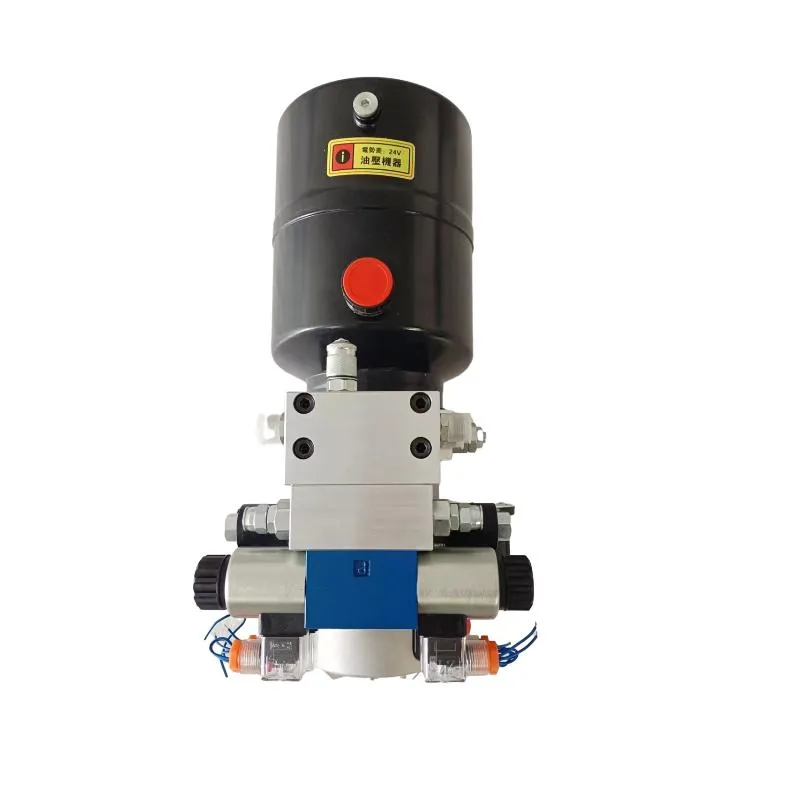Oct . 22, 2024 09:58 Back to list
Manufacturer of Dual Stage Hydraulic Cylinders for Enhanced Performance and Efficiency
Exploring the Advantages of Dual Stage Hydraulic Cylinders
In the world of industrial machinery and construction equipment, hydraulic cylinders play a crucial role in facilitating movement and providing necessary force. Among the various types of hydraulic cylinders available, dual stage hydraulic cylinders have gained popularity due to their unique design and operational efficiency. This article delves into the workings, advantages, and applications of dual stage hydraulic cylinders, and highlights some of the leading companies manufacturing these vital components.
Understanding Dual Stage Hydraulic Cylinders
A dual stage hydraulic cylinder, as the name suggests, consists of two stages or sections that function in a coordinated manner. Typically, the first stage is designed to provide a larger amount of force with a shorter stroke, while the second stage extends further to achieve a longer stroke when needed, all thanks to fluid mechanics. This combination allows for a powerful initial thrust while still enabling extended movement.
The Mechanics Behind It
The operation of a dual stage hydraulic cylinder begins with the application of hydraulic fluid. As the fluid enters the first stage, it pushes the piston forward, generating a significant amount of force. Once this stage reaches its limit, the hydraulic fluid then shifts to the second stage, allowing for additional extension. This two-step action maximizes efficiency and output, making these cylinders ideal for tasks that require both power and reach.
Advantages of Dual Stage Hydraulic Cylinders
1. Increased Efficiency Traditional single-stage cylinders may require larger actuators to achieve the same lifting capacity and stroke length as dual stage cylinders. The latter design allows for compactness without sacrificing performance, enabling machinery to perform more efficiently while using less fluid.
2. Space Saving Design Dual stage cylinders minimize the overall footprint of a machine. In industries where space is limited, this becomes a significant advantage, as more functions can be packed into a smaller area.
3. Versatility Dual stage hydraulic cylinders can be adapted for various applications, from lifting heavy loads in construction to precise movements in manufacturing. Their versatility is one of the key reasons they are extensively used in multiple sectors.
dual stage hydraulic cylinder company

4. Enhanced Control The ability to control stages independently allows operators to fine-tune movements, which is particularly vital in construction where precision can significantly impact safety and project timelines.
5. Reduced Wear and Tear The modular design of dual stage hydraulic cylinders ensures that forces are distributed more evenly throughout the cylinder. This can lead to less wear, reducing maintenance costs and prolonging the life of the equipment.
Applications Across Industries
Dual stage hydraulic cylinders find use in many different industries. Here are a few notable applications
- Construction Equipment Used in excavators, backhoes, and loaders to facilitate digging, lifting, and articulating movements. - Manufacturing Processes Dual stage cylinders are essential in assembly lines where precise and powerful movements are crucial. - Mining Operations They are deployed in heavy machinery to operate drills and other equipment, significantly improving operational efficiency. - Automotive In the automotive industry, these cylinders are used in assembly plants and for lifting vehicles during maintenance.
Leading Companies in Dual Stage Hydraulic Cylinder Manufacturing
Several distinctive companies have established themselves as leaders in the production of dual stage hydraulic cylinders. Firms such as Parker Hannifin, Bosch Rexroth, and Eaton Corporation are notable for their engineering capabilities and commitment to quality. These manufacturers not only produce high-performance cylinders but also emphasize research and innovation to meet the evolving demands of various industries.
Conclusion
The dual stage hydraulic cylinder represents a significant advancement in hydraulic technology, combining efficiency, versatility, and powerful performance. As industries continue to evolve and require more sophisticated machinery, the role of dual stage cylinders will become ever more critical. With leading companies continuously innovating and improving these technologies, the future looks promising for hydraulic systems that require effective force and precision movements. The robust design and numerous applications of dual stage hydraulic cylinders ensure that they will remain integral to the success of many industrial processes for years to come.
-
1.5-Ton Lifting Cylinder 70/82-40-290-535 - Hebei Shenghan Hydraulic Machinery Co., Ltd.|Heavy-Duty Lifting, Precision Engineering
NewsJul.29,2025
-
1.5 Ton Lifting Cylinder 70/82-40-290-535 - Hebei Shenghan | Heavy-Duty Hydraulic Solutions
NewsJul.29,2025
-
1.5 Ton Lifting Cylinder 70/82-40-290-535-Hebei Shenghan|Heavy-Duty Hydraulic Solutions&Precision Engineering
NewsJul.29,2025
-
1.5 Ton Lifting Cylinder 70/82-40-290-535 | Precision Engineering&Industrial Applications
NewsJul.21,2025
-
1.5 Ton Lifting Cylinder 70/82-40-290-535-Hebei Shenghan|Hydraulic Solution, Industrial Applications
NewsJul.21,2025
-
1.5 Ton Lifting Cylinder-Hebei Shenghan Hydraulic Machinery Co., Ltd.|High-Load Capacity&Industrial Hydraulic Solution
NewsJul.21,2025
